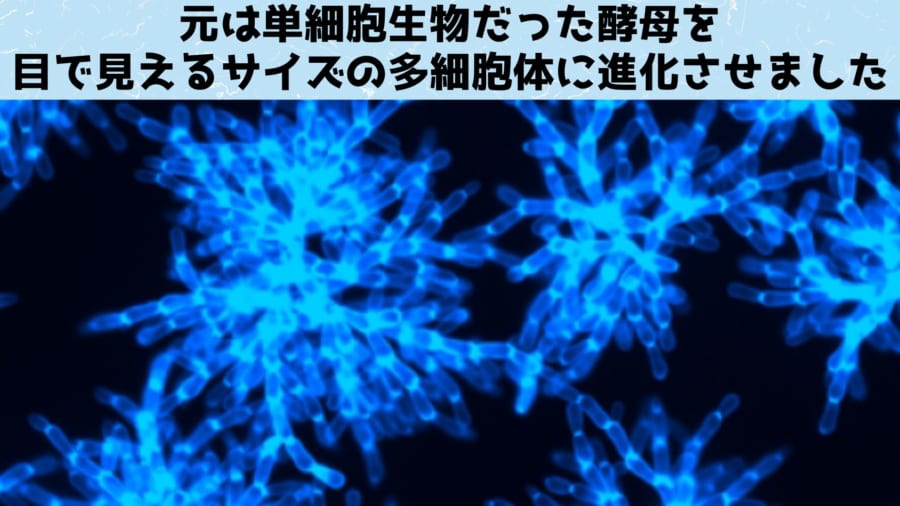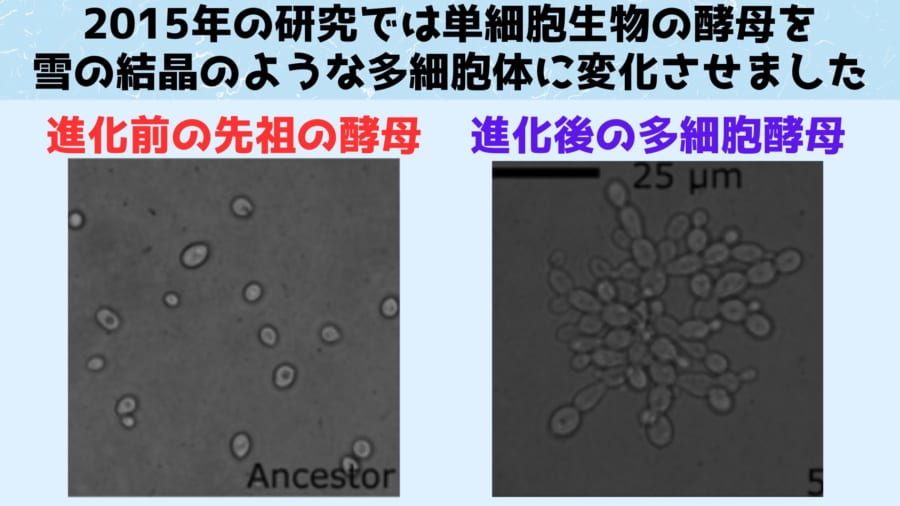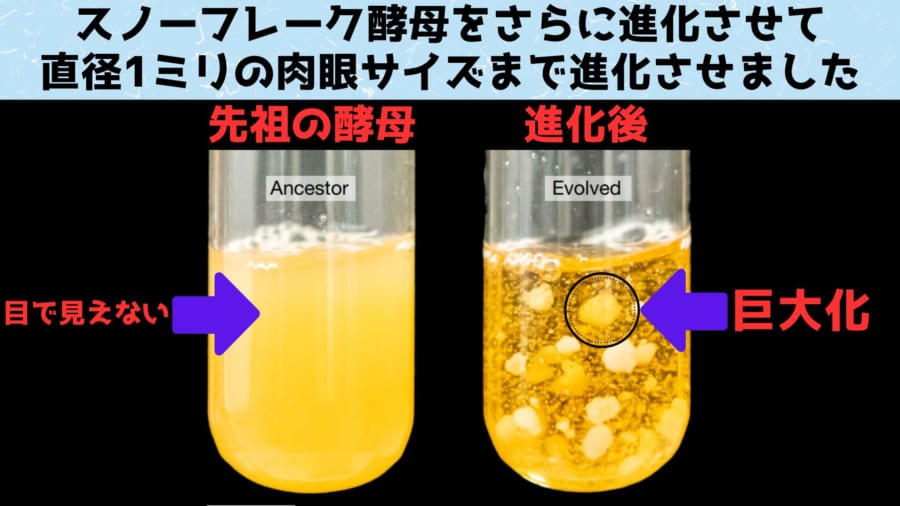Yeast evolved into multicellular organisms 20,000 times larger and physically 10,000 times stronger

The fossil record indicates that the first multicellular organisms appeared about a billion years ago.
Since life was born 3.5 billion years ago, it is estimated that it took 2.5 billion years for multicellular organisms to emerge.
Given that it only took 1 billion years from the birth of Earth (4.5 billion years ago) to the birth of life (3.5 billion years ago), it is very difficult for multicellular organisms to thrive on Earth, I can hear you.
However, recent research has revealed that trial and error in multicellular life has been repeated constantly, and that evolutionary events from single-celled organisms to multicellular organisms have occurred at different times and in different places on Earth. It is known to have happened more than that. More than 20 times independently in
In order for organisms to achieve multicellularity, there are many problems that need to be solved, such as cellular coordination and connectivity strength.
However, if we succeed in becoming multicellular, we will have the great advantage of being able to divide labor among cells that specialize in specific functions such as digestion, reproduction, movement, and sensation.
(*Multiple similar independent evolutions also occur in “Crabification”)
Crustacean genealogy that repeatedly evolved into ‘crabs’ revealed! Why King Crabs are classified as Hermit Crabs
So, for example, when examining the process by which animals, plants, and fungi (mushrooms, etc.) became multicellular, it was not due to a common multicellular ancestor splitting into three, but to each
“Ancestors of late multicellular animals”
Multicellular ancestors that later became plants.
“Multicellular ancestors that later became fungi (mushrooms, etc.)”
They are known to have descended from three independent (unrelated) ancestors.
Given that the “eyes” of animals and the “placenta” of mammals arose from a one-time mutation in a common ancestor, it can be said that the evolutionary pressure (demand) to enhance multicellularity was exponentially high.
butHow unicellular organisms became multicellular is largely a mysterywas surrounded
Therefore, in recent years, ‘artificial evolution experiments’ that develop single-celled organisms into multicellular organisms in a laboratory setting have become popular.
For exampleA study conducted in 2012In , the living environment of yeasts, which are single-celled organisms, was intentionally changed to a harsh environment “for” multicellular organisms, increasing the evolutionary pressure toward cellular pluralism.

After about 60 days, some yeasts began to maintain a snowflake-like state which was stuck together even after cell division, as shown in the figure above, resulting in multicellularity, and they were shown to have started to walk.
The multicellular yeast obtained in this experiment was called “snowflake yeast”.
A similar artificial evolution has been successful in several studies, and it turns out that it’s relatively easy to make the yeast and algae on Earth multicellular.
However, all organisms that have become multicellular according to current research are extremely small, consisting of several tens to hundreds of cells.
On the other hand, the number of cells that make up multicellular organisms reaches 1031 even in small animals such as nematodes, 30 billion in mice, and 60 trillion in humans.
So, this time researchers at the Georgia Institute of Technology bred a snowflake yeast created in 2015 and repeated the selection to gather as much mass as possible over 3,000 generations.

Then, as shown in the figure above, snowflake yeast, which was just a cluster of about 100 cells, boosted multicellularity,In the end, he was found to be 20,000 times larger than his original size (1 mm in diameter), and his physical strength was also increased by 10,000 times.
Speaking of a diameter of 1 mm, its size is comparable to a fruit fly, which is better known as a small fly.
In addition, the physical strength, which had increased by 10,000 times, was comparable to that of wood.
This result shows that yeast, which was originally a single-celled organism, can evolve to visible size (microscopic size) by artificial evolution.
The question then becomes what happened to the yeast.
What kind of transformation did the yeast cells that developed to microscopic size undergo?

“Travel maven. Beer expert. Subtly charming alcohol fan. Internet junkie. Avid bacon scholar.”







More Stories
The ranking of the best survival horror games selected by the IGN US editorial team has been released! Resident Evil RE:2 ranked first
Enjoy a hot cigarette while looking at whales and tropical fish under the sea ⁉︎ “Ploom Dive” is an amazing spatial video experience using Apple Vision Pro
Apple Watch now supports sleep apnea, watchOS 11 released – Impress Watch